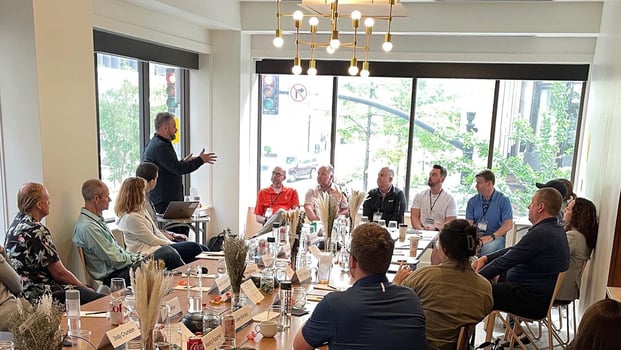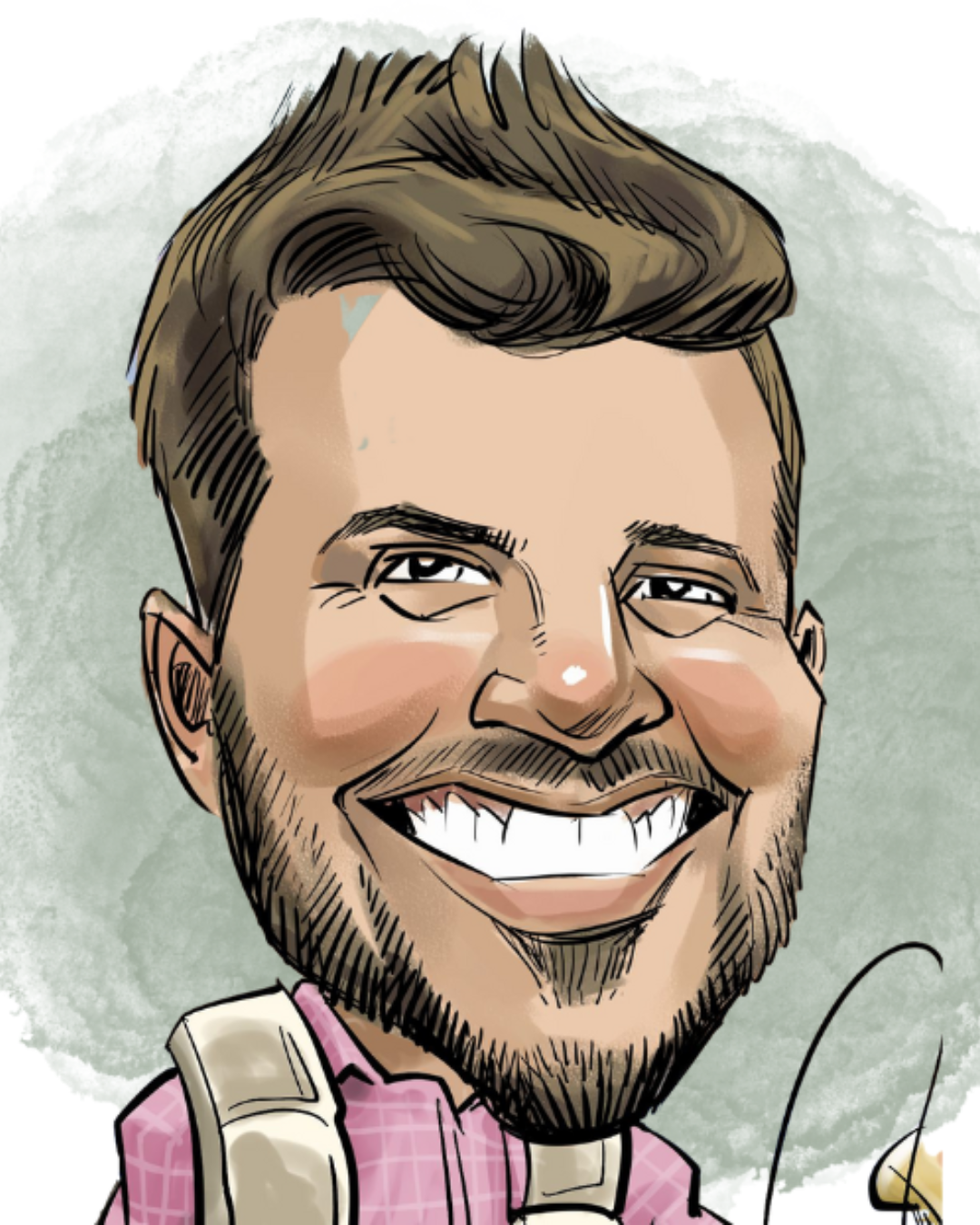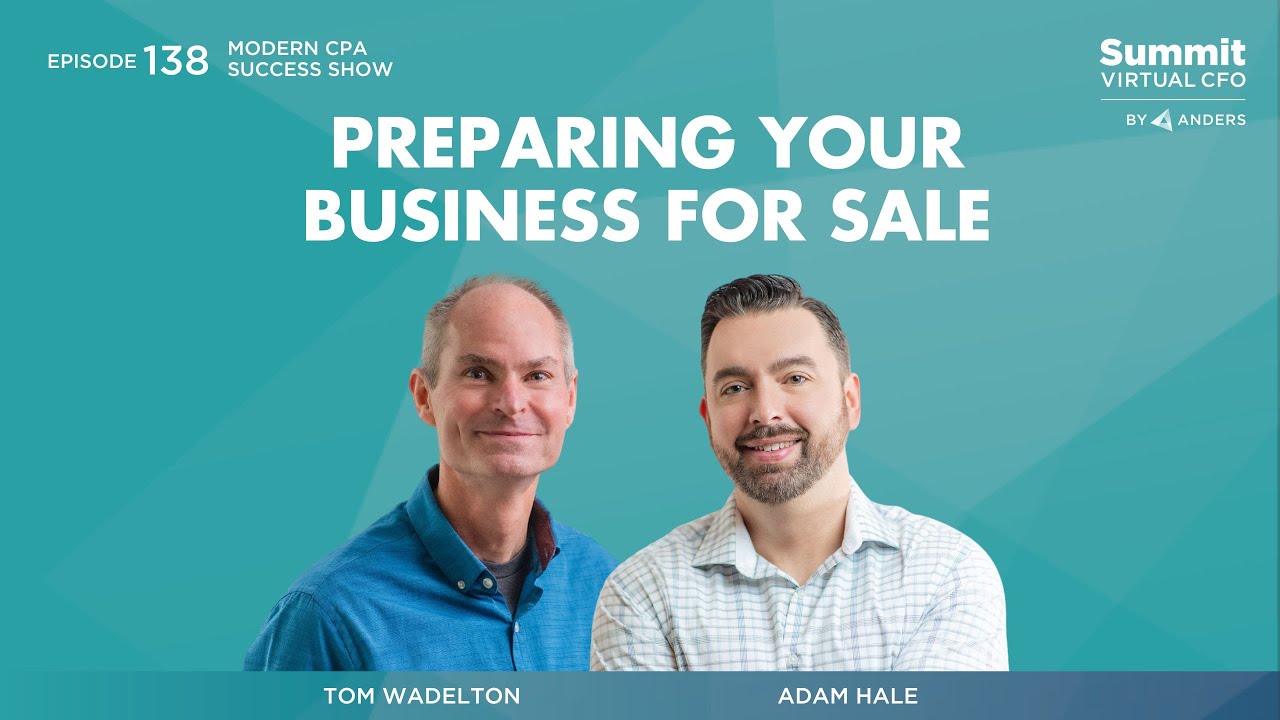Empathy has been popping up more frequently in professional contexts, as we debate the future of the workplace beyond basic metrics of productivity. Employees, leaders and experts are starting to ask the question: How do we bring empathy to the office?
Say ‘empathy’ to ten people, and you’ll probably get ten different answers – or four different answers and half a dozen blank stares. So what happens when you want to try to measure or, potentially, improve something so nebulous? More confusion and more blank stares.
For Josh Miller of the Empathy Paradigm, that’s where the concept of psychological safety comes in. Popularized by Harvard Business School Professor Dr. Amy Edmonson, psychological safety is “the foundation for an internal and external sense of security in a work environment,” Josh explains. “It is created when a corporate culture facilitates growth and authentic communication, through valuing and respecting each other's individual experiences.”
That’s the long version. Here’s a shortcut: “Psychological safety is a measurable expression of empathy itself.” 
Being able to measure empathy is a crucial first step for companies interested in investing in a DEI- or culture-based initiative; having a metric makes it possible to know if the initiative worked and, if so, to what extent?
Zooming in from the company perspective, I found Josh’s approach relevant to the role of the CFO: empathy is the foundation for mindset and behaviors that foster successful relationships – the heart of consulting. Whether it’s client-facing work or internal relationships with teammates, when you commit to cultivating empathy, you raise the bar from being a good account to a potentially great consultant.
That’s a significant payoff. So I sat down with Josh to find out just how number-loving professionals can work towards a deeper sense of empathy.
Here’s what we discussed.
The first step toward empathy (no walking required)
When you work with a concept as nebulous as empathy, Josh recommends starting from the basics: Ask everyone to explain their own understanding.
“Walk in someone else’s shoes. See the world through their eyes” – a definition Josh often hears. While he appreciates the sentiment, he adds a level of nuance: “We don't need to put ourselves in someone else's shoes and walk that mile, because that centers us and our experience.”
Instead, it’s much simpler, he contends: “All that we need is to see that person walk that mile, and care about the experience they had while walking it. We just need to know that they see the world a certain way and to care about the way that they're seeing it.”
With that definition, it becomes possible to treat empathy as a skill just like anything else that we can fine-tune, develop, and start teaching in our leadership teams.
“At a very top level,” Josh explains, “you just need to understand that your employees, co-workers, friends, family, all have a unique experience. They experience things in a way that maybe you don't understand right now.”
Navigating conflict with empathy: Curiosity + vulnerability + non-judgment
That definition becomes crucial when dealing with a classic workplace struggle: when we say something that we feel is helpful or innocent, and the other person takes it in a different way.
A natural first reaction might be defensiveness, “Hey, I didn’t mean to do that.” But that response keeps your experience at the center of the discussion, rather than acknowledging the other person’s.
“Your intent does matter,” Josh explains, “But also, the impact really matters. Every single person around you is experiencing the world in a unique way.”
As long as people are people, there's always going to be conflict, because we are perceiving the world from our unique point of view. We're going to act on that point of view, and sometimes that can infringe on someone else's.
But it becomes an issue when we assume that our subjective experiences are objectively true for everyone else. That creates bias, which leads to prejudice and discrimination.
“Prejudice can be a very charged term,” Josh says, “but ultimately, it’s just a bias created by our worldview. We carry those with us into conversations with other people.”
“A lot of times, we build a wall around ourselves and say, ‘This is the space that I occupy.’ Then we invite others to come into that space during a conversation, but that's difficult,” Josh says. “There's only so much space, and if you’re filling it entirely, how do they exist within it? They're forced to shrink, to comply with whatever rules and regulations you have in place.”
Boundaries exist for a reason. But they don't always have to be a wall, Josh offers. “Sometimes boundaries are a gate or a bridge. We start dismantling that wall through our empathy equation: curiosity, vulnerability, and non-judgment.”
Not by chance, the three main components of empathy are also the three components of human connection and progress. Josh explains, “When we show up in a space with vulnerability, we can say, ‘Yeah, I have boundaries, but maybe I don't need this wall.’ When we bring an attitude of non-judgment, we can say, ‘Okay, I know that my experience might be different than someone else's, so I'm not going to judge theirs as wrong or mine as objectively true. When we're curious, and we're asking questions to help inform that non-judgment, and to help validate that vulnerability, then we can start having some of those really difficult conversations.
Not everyone will meet you in that space. But when you go into a difficult conversation, take a minute, and recenter yourself as a curious, vulnerable and non-judgmental person – not as an authority on exactly what's happening and how you should move forward.
Tools for building empathy
Empathy is not a tech stack you can purchase for your workplace. Every team will need to develop their own understanding of psychological safety, and every employee will come to their own understanding of how to contribute to a psychologically safe workplace.
So how do you get better at making space for other people’s experiences?
Josh gives the example of the “uh-oh” moment when a manager tells an employee, “We need to talk about something you said.”
“It's natural that we all have some emotions that arise from a stimulus. We immediately have a cognitive appraisal of that, ‘Oh, no, what did I say? What's about to happen? I'm not prepared for this.’ It could go in a lot of different directions. After our cognitive appraisal comes the emotional response, for example, fear or anger. Then all of us have a behavior that comes along with that.
Now, most of us would think the appraisal, the emotion, the behavior, all happen simultaneously. But we can work on lengthening the time between those steps. It takes practice, but eventually we can get to a place where we can respond intentionally not reactively – or, at the very least, respectfully ask for some time to collect ourselves before revisiting.
Some people have to learn how to fine tune their emotional responses, but a lot of other people have been trained from a very young age not to feel at all or to feel in very specific ways. They have to start by learning how to access their emotional responses. It's an ongoing journey – and it can look like a lot of different things for a lot of different people.
It’s not the destination, it’s the journey
A lot of workplaces see empathy as something to achieve. Who wouldn’t want that? But that’s not how it works, Josh says, which may feel at odds with the data-driven approach he offers: an anonymous survey for measuring psychological safety across an organization.
The survey acts as a tool to help employees express any prejudice and discrimination they are experiencing that maybe they haven’t had a chance to communicate. The results offer data, rather than words, to show an organization where they excel already and where they might want to invest in opportunities for improvement.
Yet Josh cautions the survey isn’t about awarding a gold star to an organization. Instead, “the ultimate purpose is to start thinking critically about where you fall on that scale, and where others might be rating your company, your team and your leadership style.”
It doesn’t just measure the health of the team but, ideally, the growth individuals experience when they take the survey again in the future.
“It's not static, it's dynamic. It always has to be tested and validated and understood. It's always going to be something that we're striving for.”
If that feels frustrating for results-driven professionals, Josh has this insight: “It's the same type of mindset that can inform our understanding of people in general, that when things change, when someone acts in a different way that we're not used to, it's okay. People change, day to day. We just have to be able to sit with that and experience what's going on around us and make a plan on how we're going to move forward.”
.png?width=120&height=77&name=Summit-Virtual-CFO_color_rgb%20(1).png)














